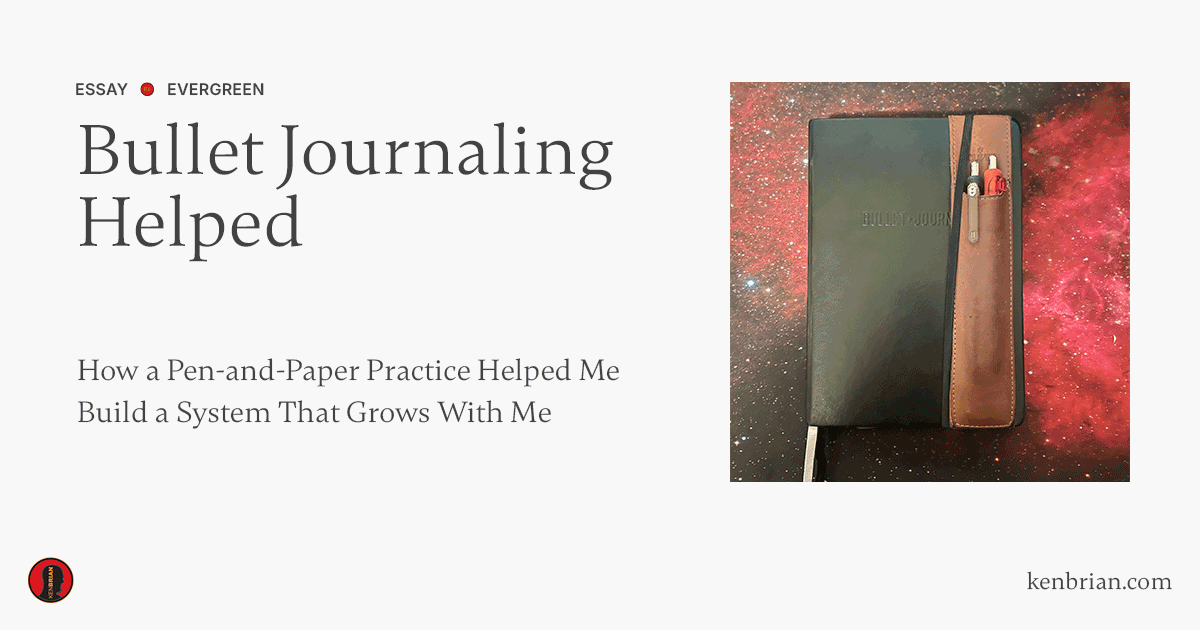Latest in: Productivity
Thanks to Tim, I've learned to question the path, embrace the change, and above all, take the damn reins. 20 Years of Experiments with Tim Ferris Bill Gurly's interview with Tim Ferriss offers a …
Bullet Journaling by Ryder Carroll I have written about Bullet Journaling before and how it has helped me become more organized and disciplined than any other tool I have discovered. "The Bullet Journal Method" …
How a Pen-and-Paper Practice Helped Me Build a System That Grows With Me
From Digital to Physical Creations I have spent a lot of my life making things (both online and off). I worked in construction, built skateboard ramps, and even helped create elaborate retail spaces for …
Subscribe to be updated about new content.
kenbrian
